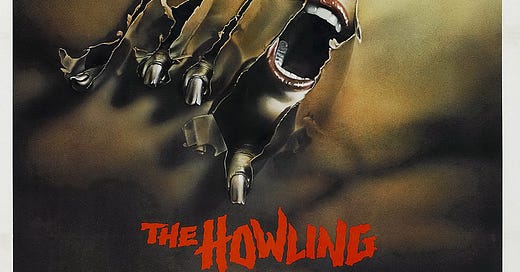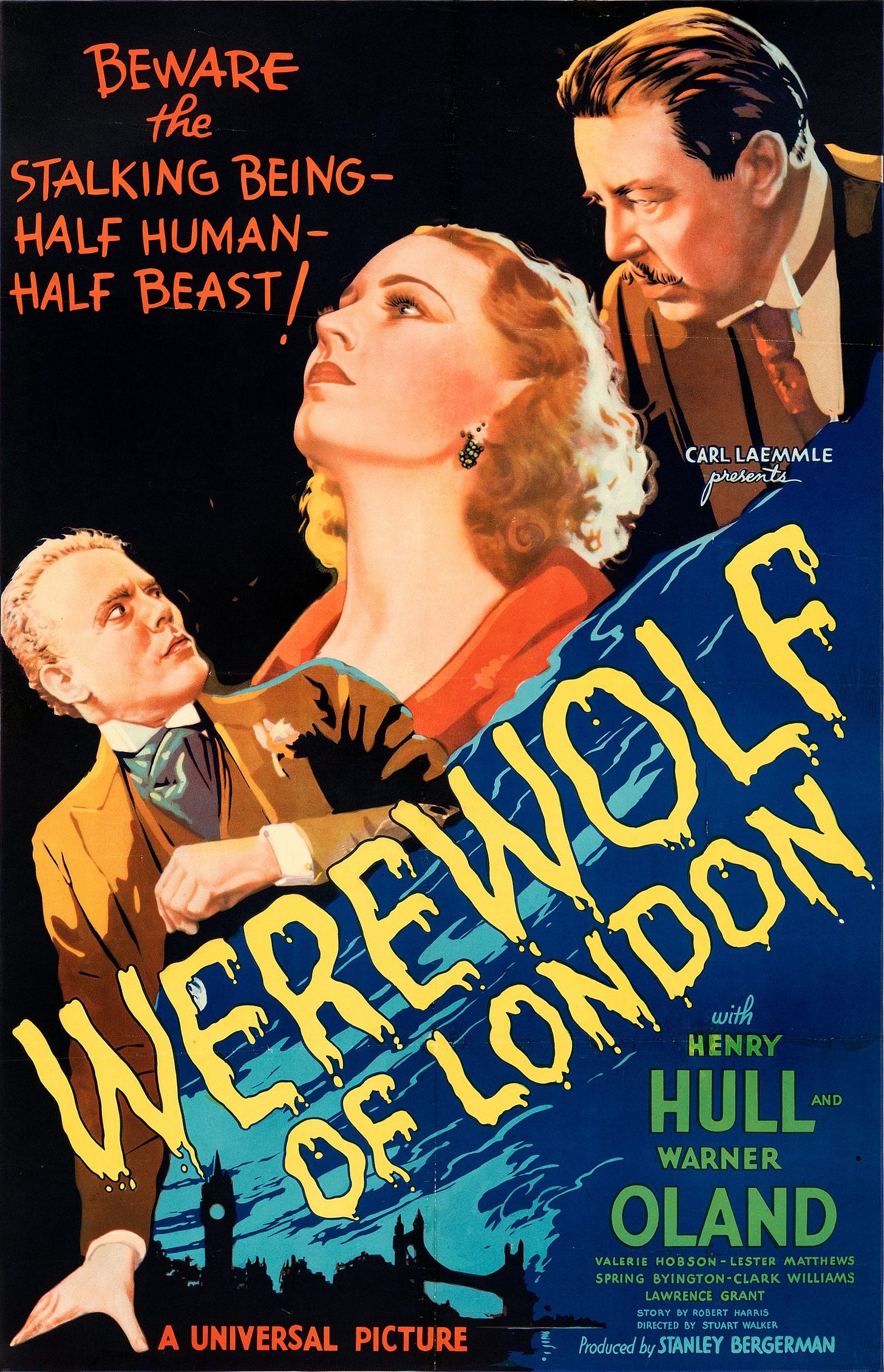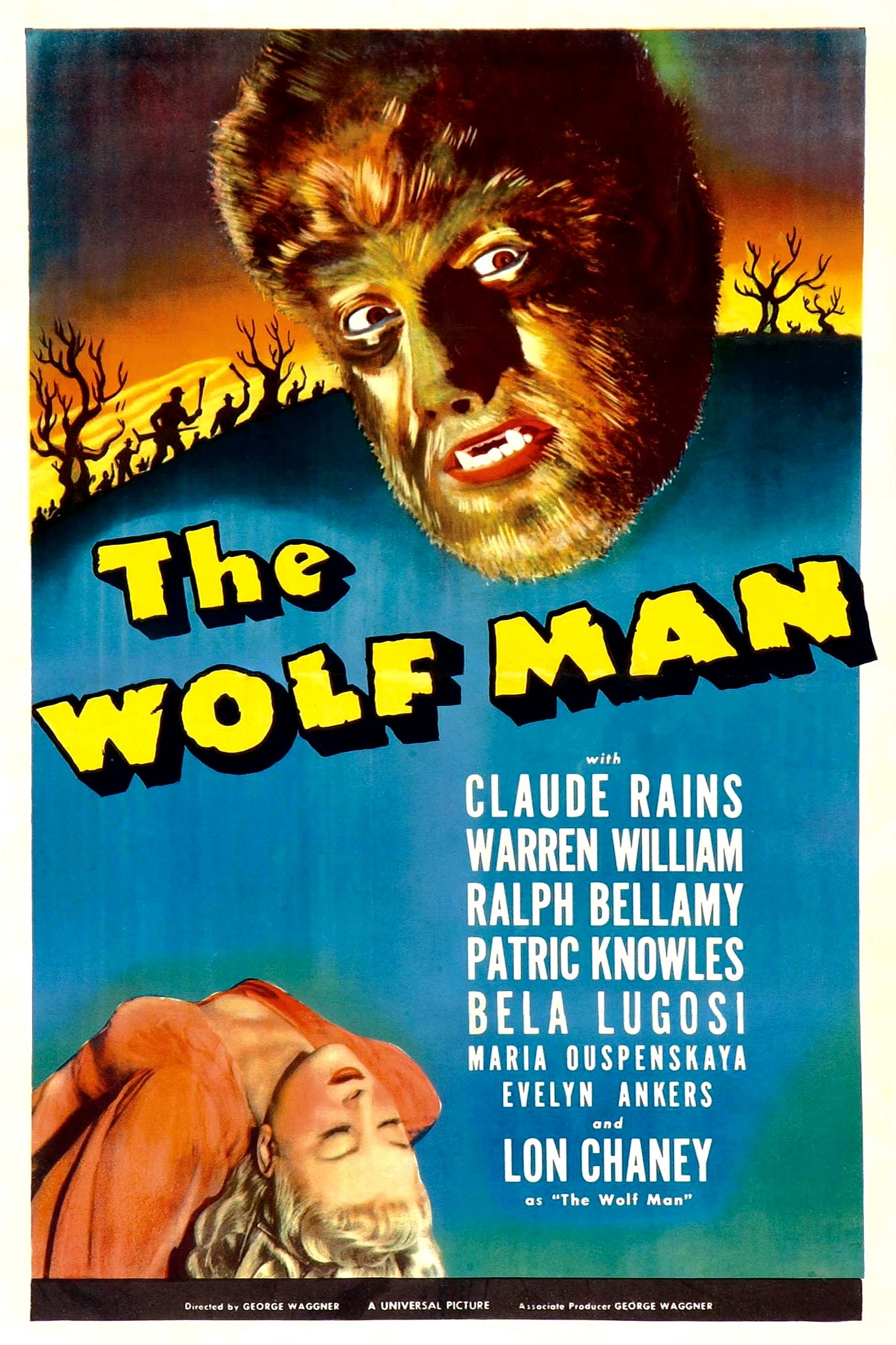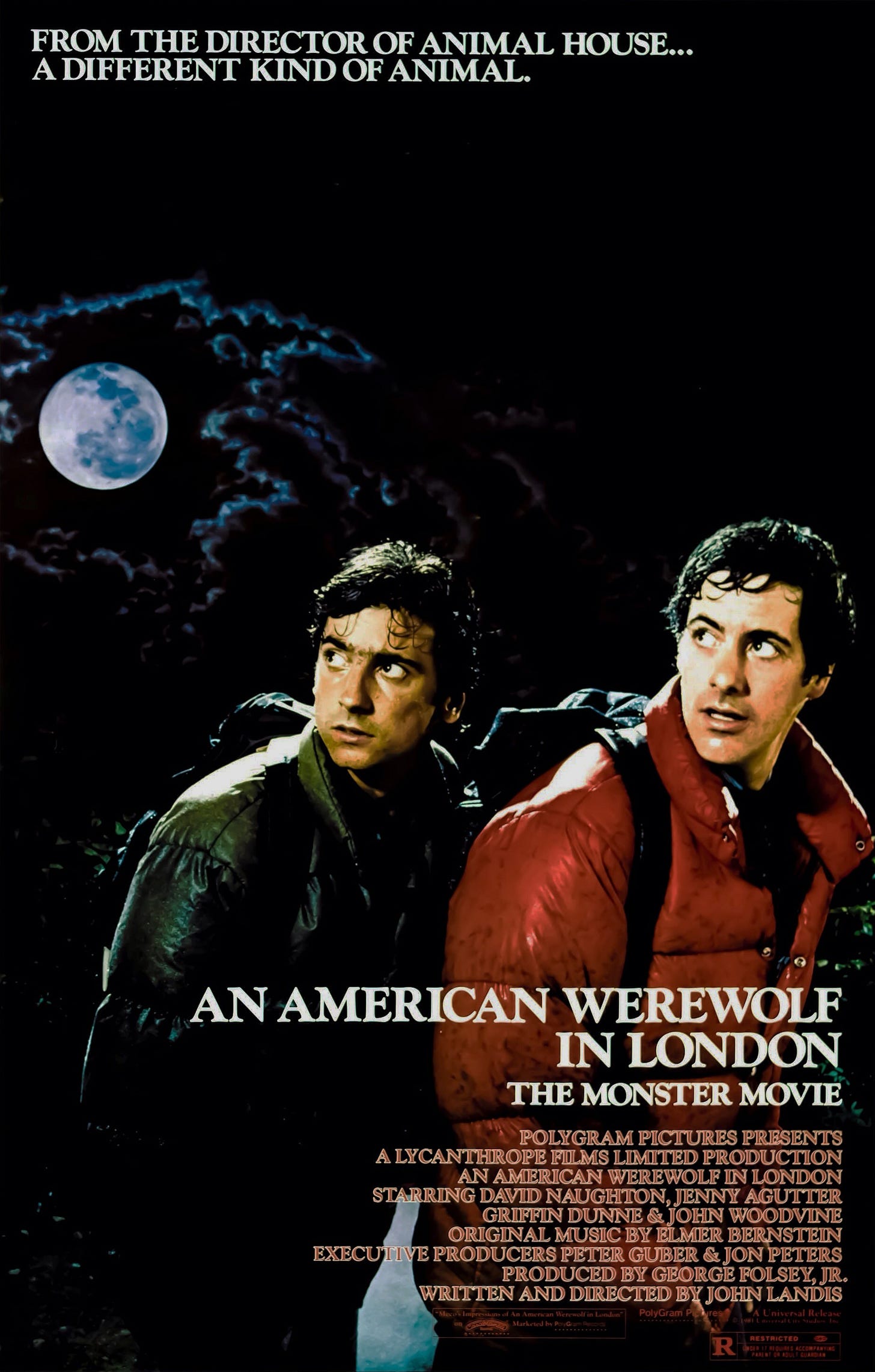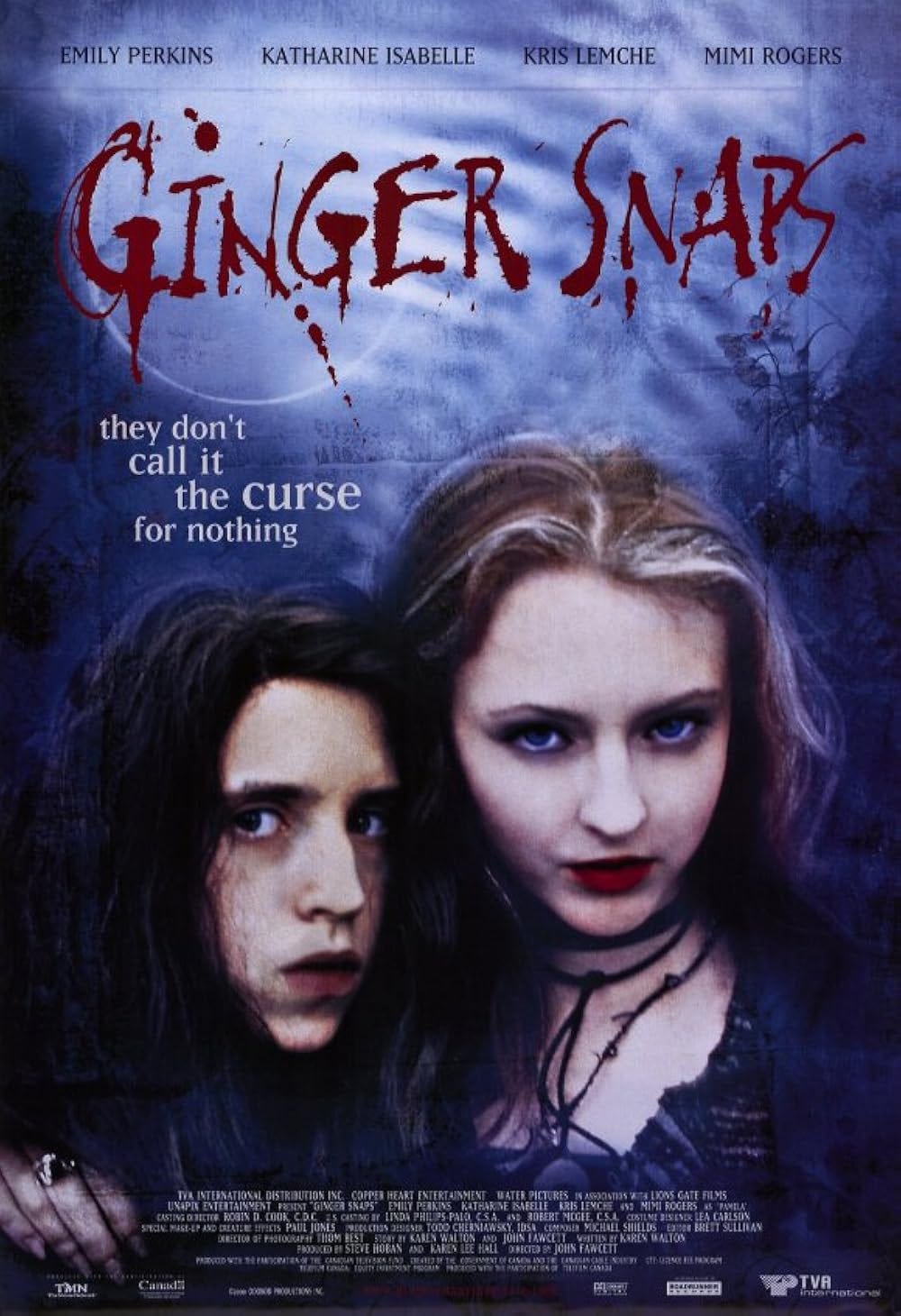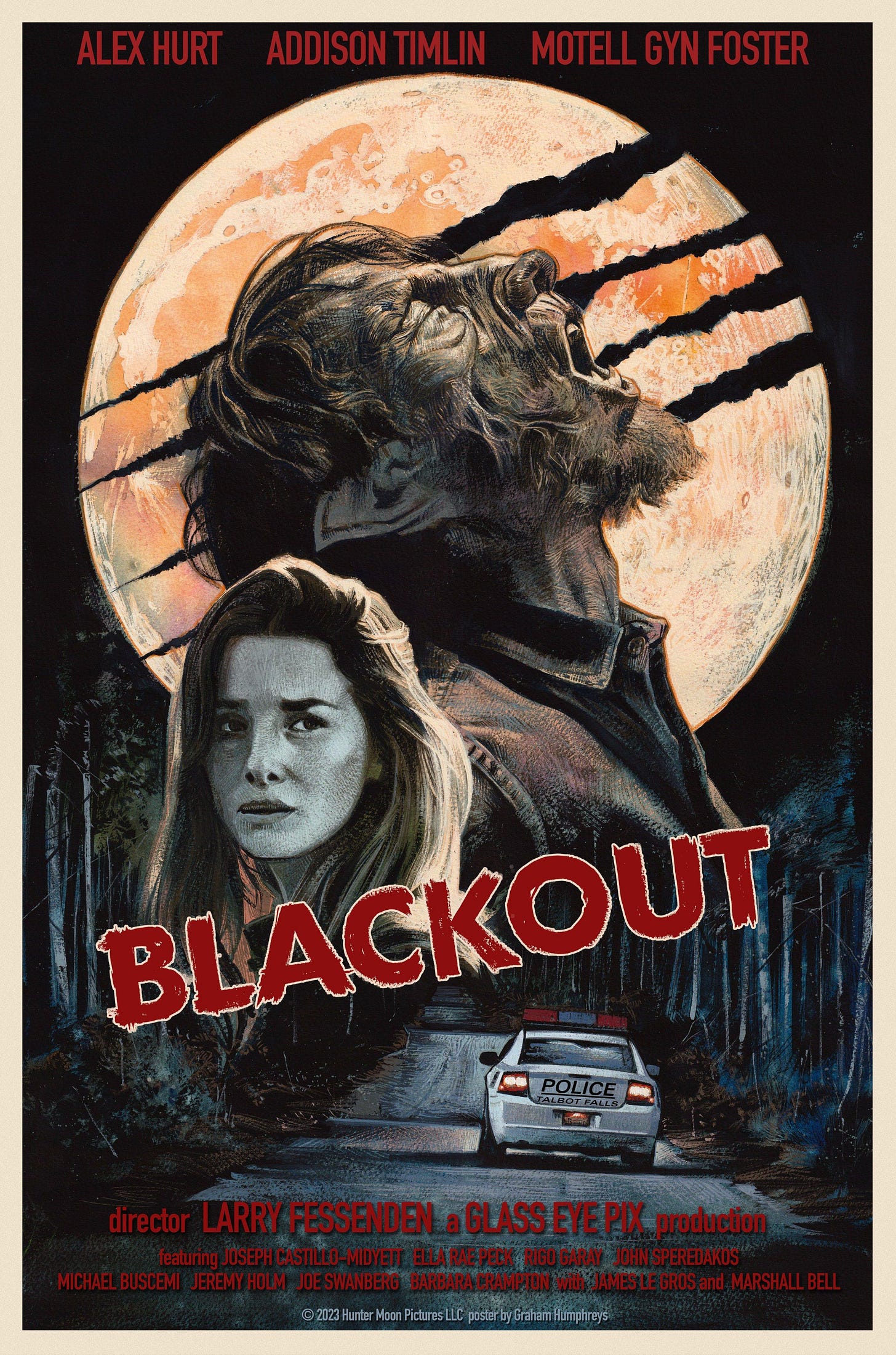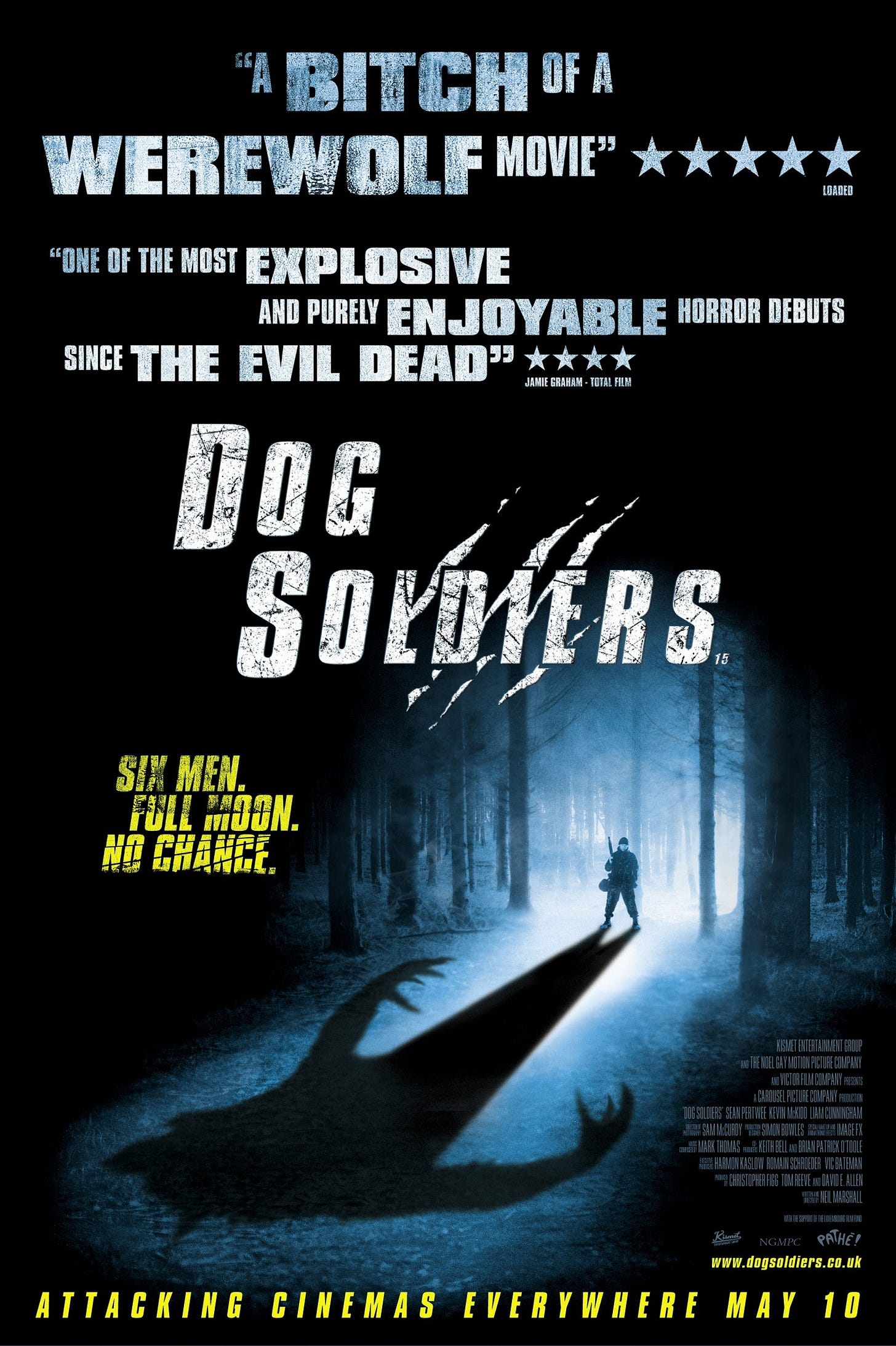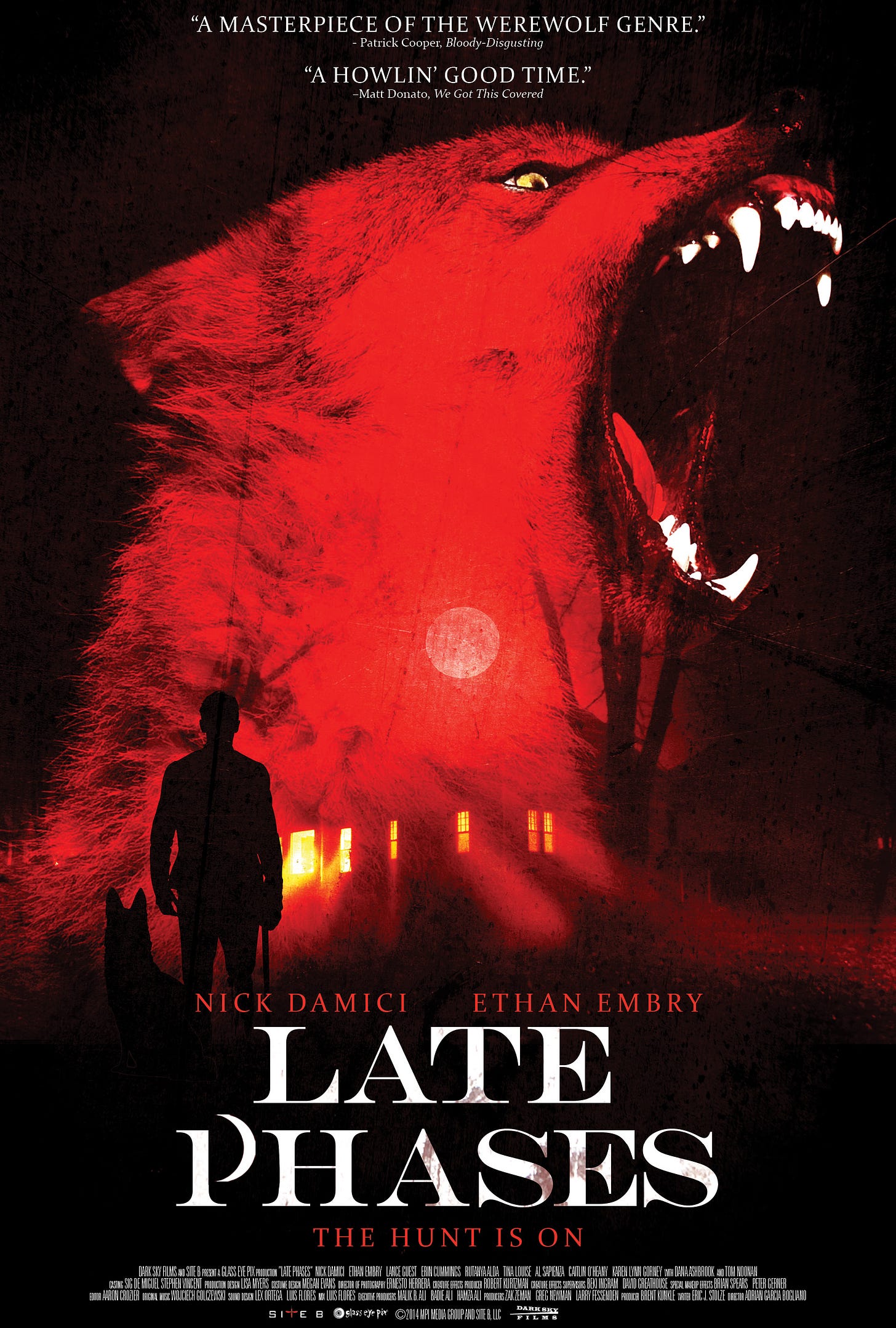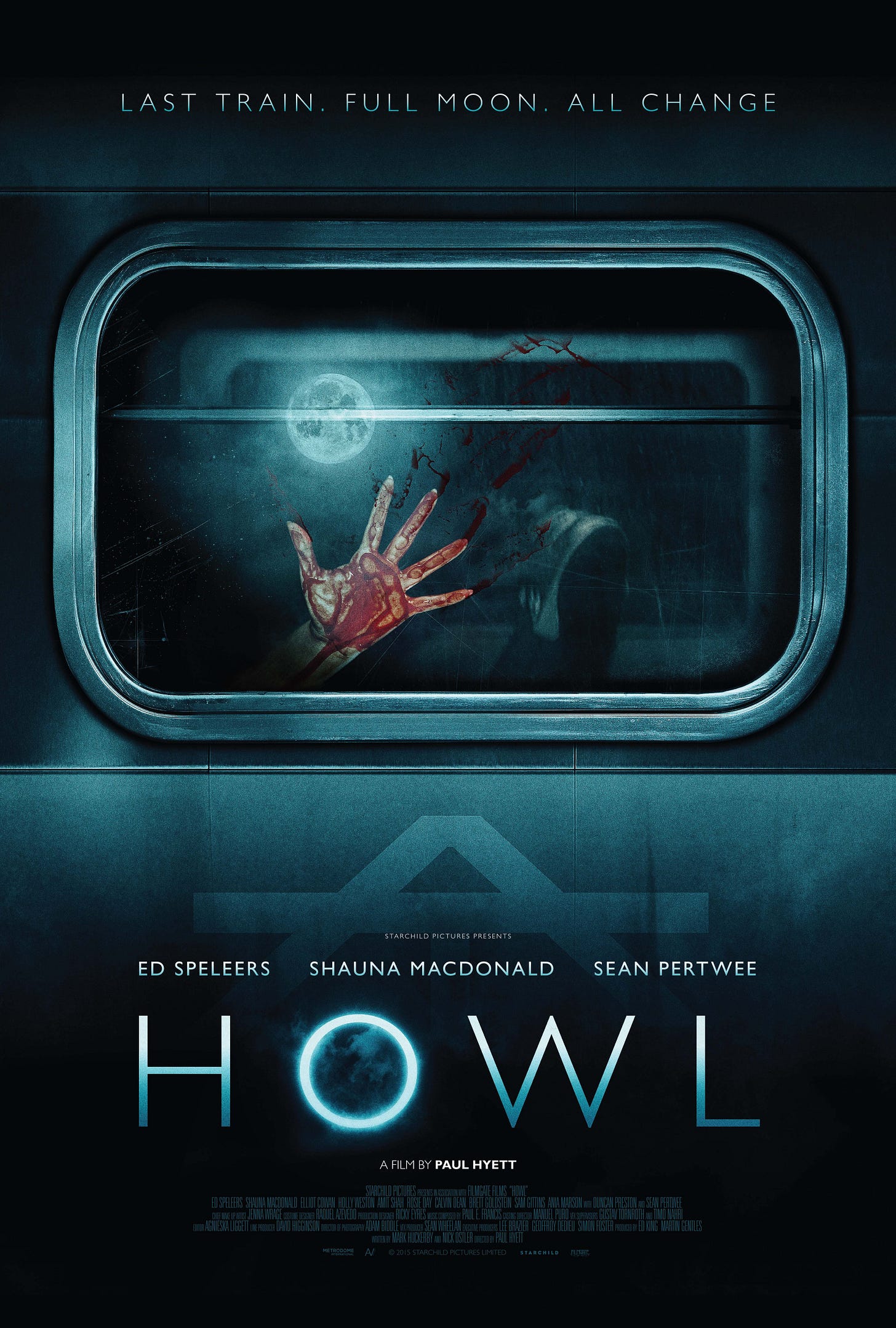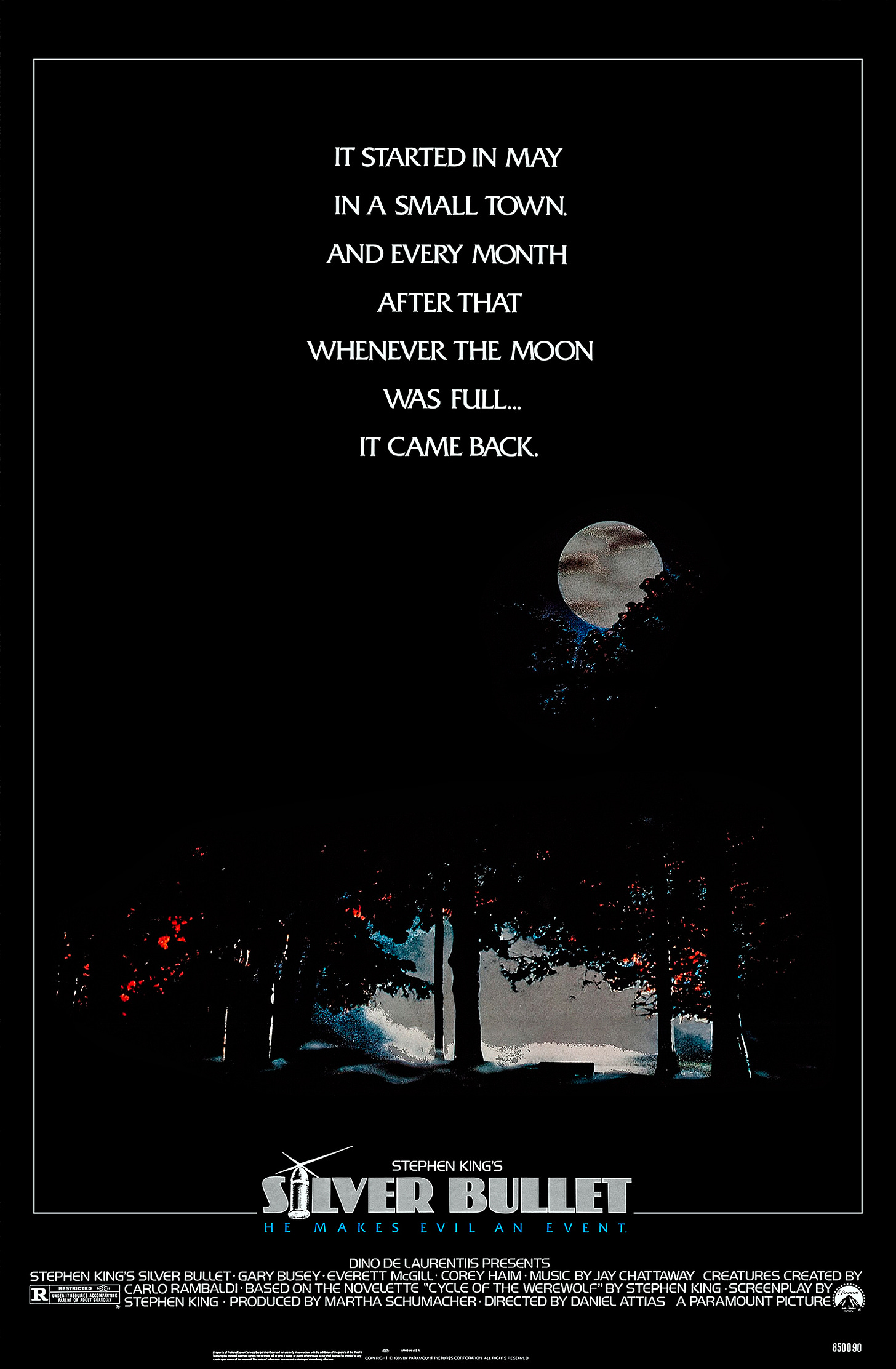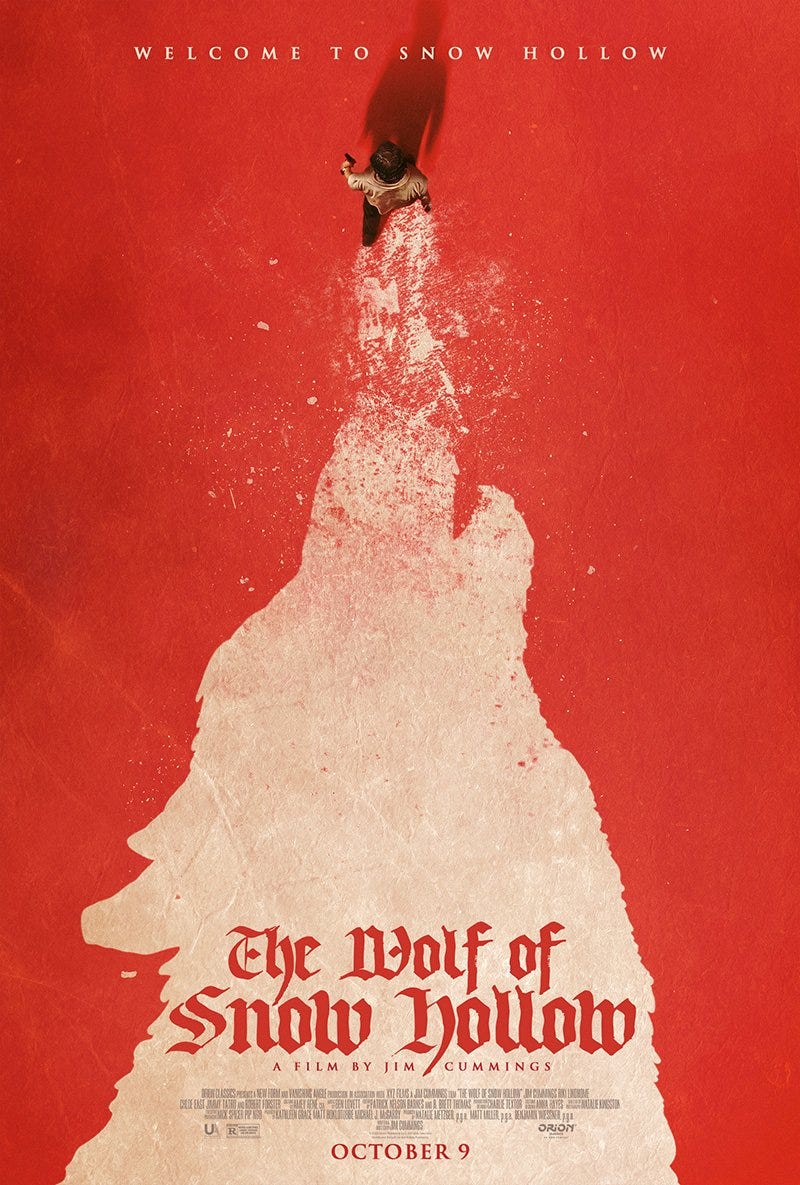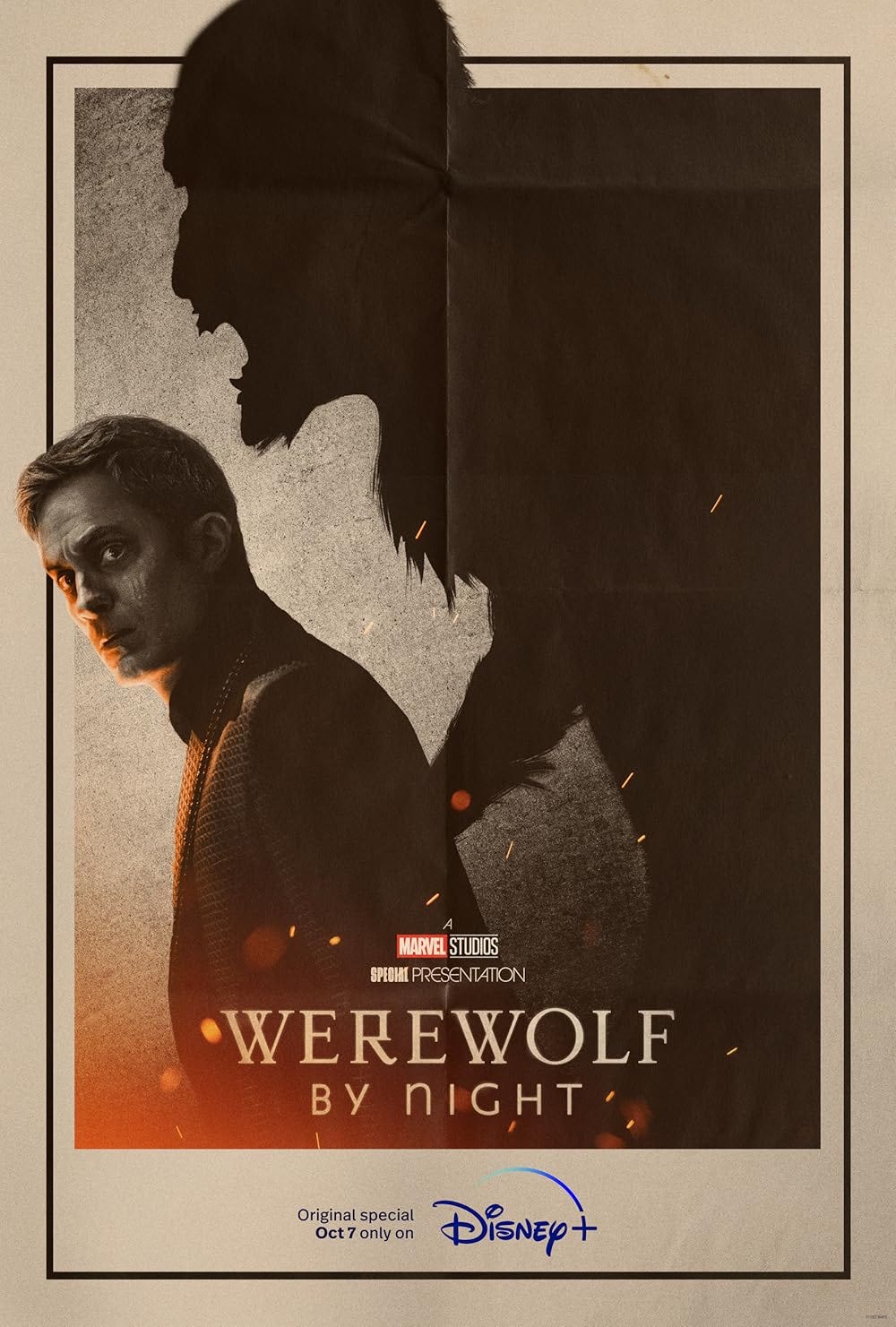Werewolves and Wolf Men on the Silver (Bullet) Screen
Get your lycanthropic fix before the new Wolf Man opens
I’ve spent the majority of the last month or so talking about vampires, so I figured it was finally time to talk about something completely different: werewolves. Don’t roll your eyes at me. December saw the arrival of the Nosferatu remake by Robert Eggers, and now January gifts us a remake of Wolf Man directed by Leigh Whannell. The original The Wolf Man from 1941 is easily the most influential werewolf movie ever made (to the point that it is often referenced in other werewolf movies), so I am excited to see what direction Whannell’s remake takes after his excellent reimagining of The Invisible Man from 2020.
I’ve assembled a list of werewolf movies to watch to get you prepped for Wolf Man as it opens this weekend. I’ve divided my list into two categories as most werewolf films follow one of these basic story structures. The first category revolves around the protagonist becoming a werewolf. The character gets attacked by a werewolf, becomes infected/cursed with lycanthropy, and fights to retain their humanity as they become a vicious killing machine. The second category focuses on normal people attempting to survive being stalked and attacked by one or more werewolf antagonists. This category of werewolf movie often includes a mystery element where the characters are attempting to identify which character is secretly the werewolf or figure out what kind of animal/person is killing people. With that in mind, here are five of my favorite werewolf movies from each category.
Werewolf Protagonist Films
Werewolf of London (1935) directed by Stuart Walker
Werewolf of London is the forgotten Universal werewolf film. It’s about a botanist named Wilfred Glendon (played by Henry Hull) who is searching for a rare plant in Tibet. While there, he is attacked by a werewolf. He survives the encounter, but he has been unknowingly infected with the curse of lycanthropy. He returns to London where he begins to transform into a werewolf on the night of a full moon and causes mayhem. This film has a lot of the traits we come to expect from werewolf movies, but the rules of lycanthropy aren’t quite as fleshed out as they are in the next film on this list. Hull does a good job as the titular werewolf, though the makeup effects are fairly minimal (he’s much more man than wolf). It’s a film worth watching to see some of the earliest werewolf tropes making their appearance on the big screen.
The Wolf Man (1941) directed by George Waggner
Werewolf of London crawled so that The Wolf Man could trot. This is one of the first classic Universal monster movies I ever saw, and it has remained one of my favorites. The film follows Larry Talbot (played by Lon Chaney, Jr.) as he travels from America to his ancestral home in Wales following the death of his brother. He is attacked by a werewolf while there (a Romani fortune teller played by Bela Lugosi), and he becomes a werewolf himself who stalks his prey at night under a full moon. This film is the standard bearer for werewolf movies. It firmly establishes many of the rules that govern lycanthropy, but what really makes it so special is Chaney’s performance as the tortured Talbot and the incredible special effects. The transformation sequence is legendary at this point, and the makeup and prosthetics courtesy of Jack Pierce have become iconic. There’s a reason it is being remade for a second time this year.
An American Werewolf in London (1981) directed by John Landis
The Wolf Man is the most famous werewolf movie of all time, but An American Werewolf in London isn’t far behind. The film follows a pair of American tourists (played by David Naughton and Griffin Dunne) as they go backpacking across Europe. Unfortunately, they get attacked by a werewolf and one of them gets infected/cursed to become a werewolf himself. The film does an excellent job of balancing some meta humor (this film is set in a universe where Universal’s The Wolf Man exists) with some truly gruesome and disturbing horror. The true star of the film is legendary effect guru Rick Baker. The first werewolf transformation scene in particular is one of the best uses of practical effects in a movie that I’ve ever seen. It even went on to win the Academy Award for Best Makeup.
Ginger Snaps (2000) directed by John Fawcett
Ginger Snaps is one of those indie horror films that achieved cult classic status pretty much the second it debuted. It follows two teenage sisters who are high school outcasts (played by Emily Perkins and Katharine Isabelle) who are attacked by a werewolf. One of the sisters (Isabelle) becomes infected/cursed and slowly changes into a werewolf throughout the movie. This transformation also leads to her becoming more popular and desired by her male classmates and begins to create a rift between herself and her younger sister. The film is a pretty obvious metaphor for going through puberty, and it does an excellent job of satirizing both the high school experience as well as patriarchal attitudes towards women and girls through the lens of a pretty gruesome werewolf movie.
Blackout (2023) directed by Larry Fessenden
Larry Fessenden has developed a reputation as one of the best directors in the industry when it comes to making effective horror films on a minuscule budget. Having already tackled vampires and Frankenstein (in Habit and Depraved respectively), Blackout sees him trying his hand at the werewolf mythos. The film follows a man named Charley Barrett (played by Alex Hurt) who is struggling with alcoholism and depression due to his guilt over the people he has killed as a werewolf every month that there is a full moon. Fessenden very effectively uses lycanthropy as a metaphor for addiction in the film, and he also takes aim at small town bigotry, mob mentality, and corporate greed. It’s yet another strong entry in Fessenden’s oeuvre.
Werewolf Antagonist Films
The Howling (1981) directed by Joe Dante
The Howling is my personal favorite werewolf film. It follows a news anchor named Karen White (played by Dee Wallace) who suffers from PTSD following a harrowing encounter with a serial killer. Her therapist (named George Waggner in a fun reference to the director of The Wolf Man) encourages her to attend a New Age treatment resort called The Colony. Once there, it becomes clear that one or more people at the resort are werewolves. Though often overshadowed by An American Werewolf in London that came out later that same year, I think The Howling actually does a better job at balancing the humor with the horror as it becomes both a meta commentary on werewolf movies (The Wolf Man is referenced in this film as well) as well as being an effective and scary werewolf movie in its own right. The practical effects from Rob Bottin are also excellent. There werewolves themselves look incredible, and the transformation sequence is one of the best in werewolf movie history.
Wolfen (1981) directed by Michael Wadleigh
Speaking of werewolf movies that were overshadowed by An American Werewolf in London because they were released in 1981, let’s talk about Wolfen! This one is probably more accurately described as werewolf adjacent than a true werewolf movie, but it fits the parameters closely enough to be included on this list. It’s about a homicide detective named Dewey Wilson (played by Albert Finney) who is investigating a series of grisly murders that bare more of a resemblance to animal attacks than they do a typical homicide. The victims all appear to be linked to a real estate project being built in New York City. This film is elevated by excellent performances from the cast as well as some really cool sequences shown from the killer’s perspective reminiscent of Predator. On top of that, real wolves were used for some scenes.
Dog Soldiers (2002) directed by Neil Marshall
Dog Soldiers has a really fun concept for a werewolf movie: what if a group of highly trained special forces soldiers encountered werewolves? This low budget film relies on strong performances from its cast (led by Sean Pertwee, Liam Cunningham, Kevin McKidd, and Emma Cleasby) and some high octane action sequences mixed with horrific violence to drive the plot forward. It’s basically Predator with werewolves. What more do I even need to say about this one?
Late Phases (2014) directed by Adrián García Bogliano
If Dog Soldiers is Predator with werewolves, then Late Phases is Cocoon with werewolves. That didn’t come right. What I mean is that it’s a werewolf movie set in a retirement community. The film follows Ambrose McKinley (played by Nick Damici), a blind war veteran who is moved into a retirement community by his son (played by Ethan Embry). Once moved in, the community starts getting terrorized by a werewolf with McKinley being the only person who understands what is happening and prepared to do something about it. It’s a fun little horror movie with some genuinely unique and creative portrayals of werewolves.
Howl (2015) directed by Paul Hyett
Train to Busan gave us zombies on a train, The Last Voyage of the Demeter gave us Dracula on a boat, and Snakes on a Plane gave us…snakes on a plane. Howl gives us werewolves on a train. This is a fun one with director Paul Hyett maximizing the confined setting to horrific effect. Our protagonist (played by Ed Speleers) is a down on his luck train guard who begrudgingly picks up an extra shift on a red eye train going from London to Eastborough. His bad luck continues when the train comes under attack by a werewolf. The film works due to the simplicity of the premise and a likable lead who is thrust into a leadership position during an extraordinary situation. It’s also another case of some pretty unique werewolf designs.
Honorable Mentions
Silver Bullet (1985) directed by Daniel Attias
This Stephen King adaptation wasn’t quite good enough to make the top five in the “werewolf antagonist” category, but I had to at least make mention of it due to the bonkers performance by Gary Busey as Uncle Red and a truly unsettling and intimidating performance by Everett McGill as Reverend Lowe.
The Wolf of Snow Hollow (2020) directed by Jim Cummings
I love this movie, but I didn’t feel totally comfortable including it on this list for reasons that will become more apparent if you watch it. Written by, directed by, and starring Jim Cummings, The Wolf of Snow Hollow is a horror-comedy about an alcoholic deputy sheriff (Cummings) tasked with investigating a spate of killings in a ski resort town as his personal life spirals out of control. Cummings is spectacular in this film with both his comedic timing and sense of direction.
Werewolf by Night (2022) directed by Michael Giacchino
The only reason I didn’t include this one in either list is because it only has a scant fifty-five minute runtime, so I didn’t really think of it as a feature film. That said, it’s a blast. Adapted from the Marvel Comics character created by Gerry Conway, Mike Ploog, Roy Thomas, and Jeanie Thomas, this black and white throwback to classic Universal monster movies follows a group of monster hunters as they engage in a competition to hunt down and kill a monster and claim the mystical Bloodstone as their prize. Gael García Bernal and Laura Donnelly are great as Jack Russell and Elsa Bloodstone respectively, and the transformation sequence is one of the most creative and chilling portrayals I’ve seen in a werewolf movie in quite some time.

